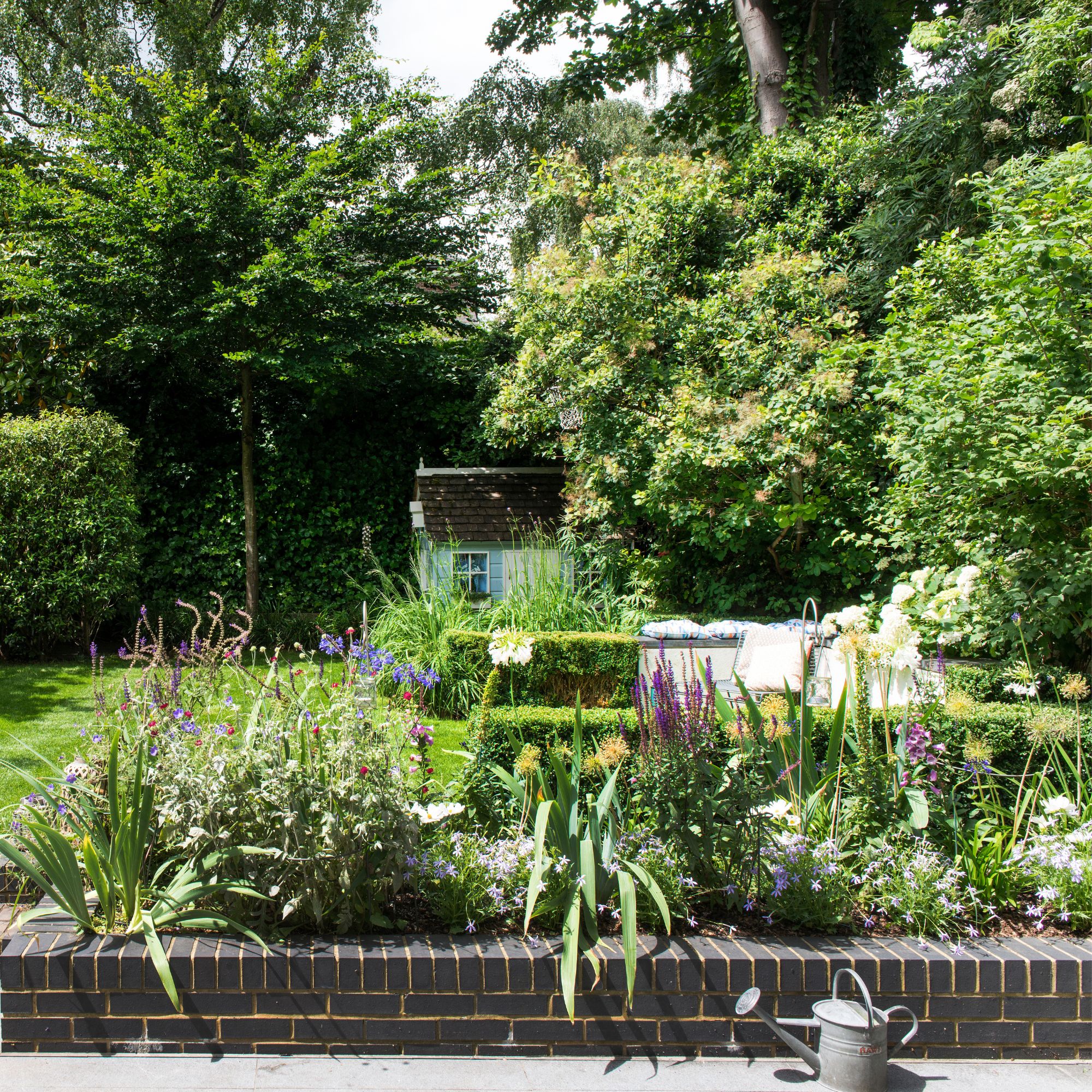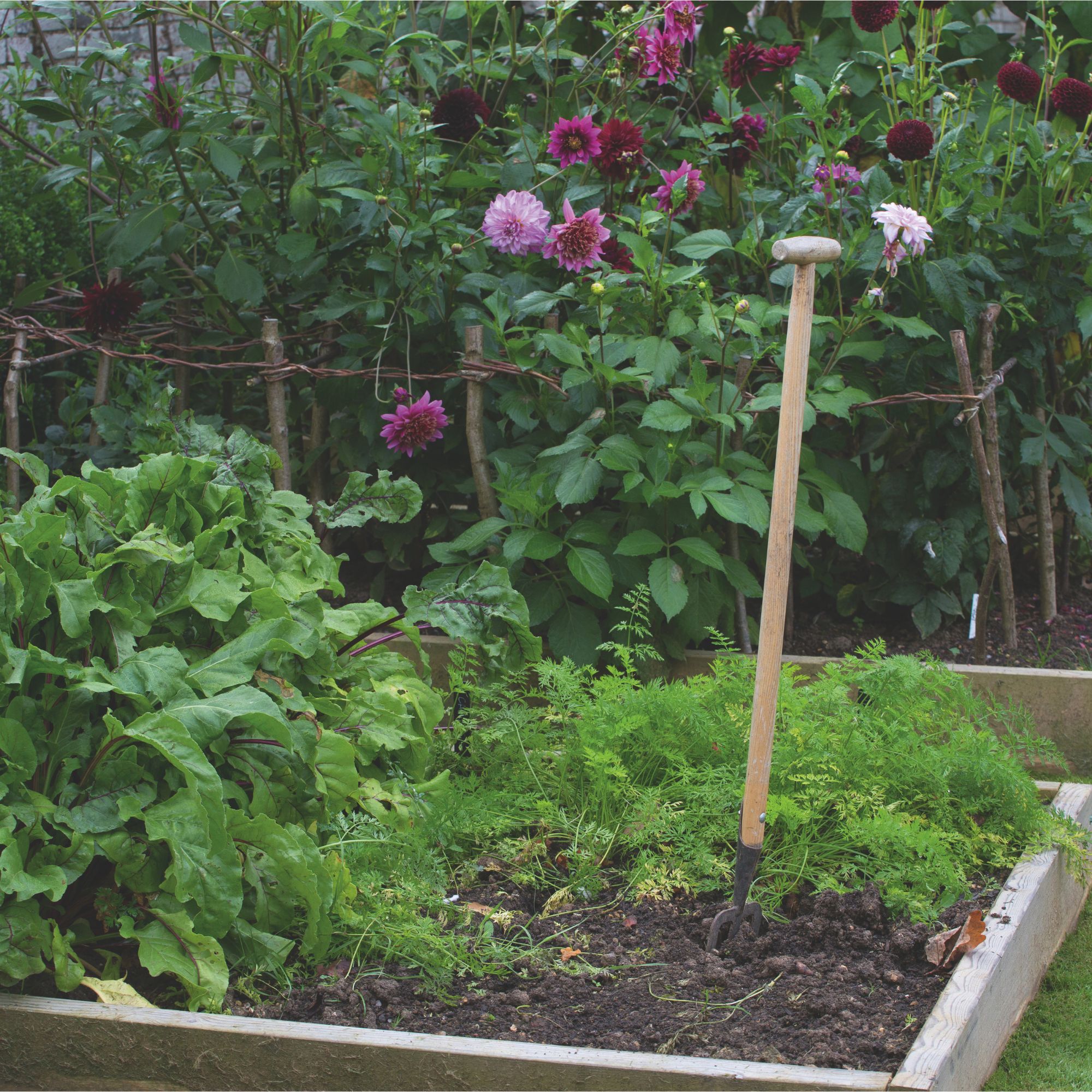How to water plants in clay soil – experts share the best ways to keep them happy even in summer heat
Clay soil can be tricky to manage, especially when it comes to watering. Here’s what the experts advise…


Does your garden resemble The NeverEnding Story’s Swamps of Sadness when it rains? Then you need to learn how to water plants in clay soil, stat!
Boggy when wet, distressingly hard and cracked when hot, it’s little wonder that clay has a bit of a bad reputation among gardeners. Especially when it also has a nasty little habit of sticking together in large, dense clumps that are difficult to break up and work with.
Of course, you learn how to improve clay soil for gardening, and you can fill it to the brim with plants that can tolerate waterlogged soil, but there’s zero point to any of it if you don’t learn how to water them properly. And so, to that end...
How to water plants in clay soil
Clay soil is surprisingly common in the UK, so if you think you have it in your garden, it's very likely you do. However, that isn't necessarily a cause for despair – quite the opposite, actually.
'Clay soil might be heavy, get compacted easily and drain slowly,' says Morris Hankinson, director of Hopes Grove Nurseries. 'But it’s also nutrient-rich and retains moisture well.'

Morris Hankinson is the founder and managing director of Hopes Grove Nurseries Ltd, the UK’s only specialist grower-retailer of hedging plants. He established the thriving business in 1992, shortly after graduating with a Commercial Horticulture Degree from Writtle College, Essex.
Essentially, clay soil can be very good news for your garden. The trick is simply knowing how to water plants in clay soil so they thrive instead of struggling in soggy or bone-dry beds.
Here’s how to keep your garden happy, healthy, and perfectly hydrated.
Sign up to our newsletter for style inspiration, real homes, project and garden advice and shopping know-how
1. Water less often, but deeply
The number one rule when learning how to water plants in clay soil? Quality over quantity; as ever, overwatering is one of the worst watering mistakes you can make.
'Clay soil will hold the water for longer than some other soil types,' explains Morris. 'So, usually a good soaking into the soil once or twice a week will be enough. Much more than this and the soil may be too wet for many plants to grow.'
The tiny particles found in clay soil basically lock water in like a sponge, so it can stay wet for days. Focus, then, on giving your plants a deep drink less often to encourage roots to grow deeper in search of moisture.
2. Keep things slow and steady
It’s tempting, especially when things are busy, to rush when you’re out with the hose or watering can. Don't. If you want to learn how to water plants in clay soil like a pro, remember that you need to take it slow if you don’t want it to run off the surface or disappear down cracks instead of soaking in.

'When watering clay soil, it’s important to water slowly,' says Morris. 'Drip irrigation is useful for clay soils as it waters gradually, allowing the water time to absorb into the soil.'
If you’re watering by hand, use a watering can with a fine rose like this one from Amazon, or set your hose nozzle to a gentle shower rather than a strong jet. Make sure to take breaks occasionally to let water soak in before continuing (you can use the time to take some deep breaths, listen to the birds, and simply be in the moment!).
3. Check before you water
One challenge with clay soil is that it might look dry on top, but still be damp a few inches below. Overwatering because you assume it’s dry can quickly drown your plants.
Before you water plants in clay soil, then, stick your finger into the dirt like or use a moisture meter like Amazon’s XLUX Long Probe, £9.99. If it’s damp below the surface, you can wait another day or two.
'Too much and plants suffocate. Too little and they wither,' warns Steven Bell, gardening enthusiast and founder of Paving Shopper.

Steven Bell is an experienced landscaper, with years of experience owning paving and gardening companies. Combining hands-on expertise with a deep appreciation for sustainable landscaping practices, Steven enjoys sharing his insights with readers to inspire their own green-thumb adventures.
'Watering clay can feel like a fine art,' he adds. 'Or dark magic!'
4. Mulch, mulch, mulch
We've talked a lot about mulching before, but it's extra important if you're learning how to water plants in clay soil.
'Mulching the surface with well-rotted organic matter will keep the soil moist, decreasing the chances of the surface compacting and cracking. Over time, annual mulching will also help the soil structure,' says Morris.

Mulch acts like a protective blanket, keeping moisture in during hot weather and helping rain penetrate the soil more evenly. Organic types of mulch, like compost, leaf mould, or well-rotted manure, are perfect for clay because they gradually improve its structure, making it lighter and easier for water to move through.
Aim for a layer about 5-7cm thick around your plants, but keep mulch away from direct contact with stems to avoid rot.
5. Become a morning person
Timing matters when it comes to watering any soil, but especially if you’re working with plants in clay soil. Morning watering is best because it allows plants to absorb moisture before the heat of the day and reduces the risk of diseases that thrive in cool, damp overnight conditions.
'As with most watering, it’s recommended to water in the morning,' says Morris. 'This gives plants the time they need to absorb water and nutrients before it gets too hot. It can also help reduce pest and disease damage.'
Rainwater is always best, so try installing a water butt like the Ward 100L Slimline Water butt from B&Q, £28 to collect some during the summer downpours.
6. Choose your plants wisely
Finally, remember that the best watering technique in the world won’t help if your plants simply hate wet feet. Many actually love the moisture-retaining properties of clay, so take care to fill your garden with the very best plants for clay soil.
'Some plants actually love clay soil – think hardy geraniums, roses, asters, and daylilies. Once established, these tough customers are better suited to coping with the soil’s quirks, especially when watered properly,' says Steven.
'Pair the right plant with the right watering technique, and you'll be onto a winner.'
FAQs
How often should clay soil be watered?
One of the biggest mistakes with clay is watering too often and too lightly. 'This only wets the surface, encouraging roots to stay shallow, exactly where clay is most likely to dry out and crack in heatwaves,' says Steven Bell of Paving Shopper.
The fix? Water less often, but for longer.
'This encourages roots to grow deeper into the soil, where it stays cooler and more consistently moist. Aim for one or two good soakings a week during dry spells, rather than daily sprinkles.
How to keep plants alive in clay soil?
If you want to learn how to keep plants alive in clay soil, it's important to make sure you water slowly, deeply, and intentionally, not to mention set to work mulching.
'A thick layer of mulch, such as compost, bark chips, or well-rotted manure, does wonders in clay-heavy gardens. It insulates the soil, reduces evaporation, and helps prevent that dreaded cracked-surface effect in summer,' says Steven Bell of Paving Shopper.
He adds that the more organic matter you add over the years, the better it will drain, and the less finicky watering becomes. 'If you’re dealing with heavy clay, improving the soil isn’t a one-time job. Keep adding compost, mulch, and other organic materials,' he advises.
'Eventually, your soil will hold moisture better without turning into a swamp.'
Learning how to water plants in clay soil might be a challenge, but it’s not a curse. With slow, deep watering, mulch, and a few soil improvements, your clay-heavy beds can become lush, vibrant spaces brimming with healthy plants.
Which is good news for Artax, we suppose, if he ever wanders into your garden...

Kayleigh Dray became Ideal Home’s Acting Content Editor in the spring of 2023, and is very excited to get to work. She joins the team after a decade-long career working as a journalist and editor across a number of leading lifestyle brands, both in-house and as a freelancer.
You must confirm your public display name before commenting
Please logout and then login again, you will then be prompted to enter your display name.